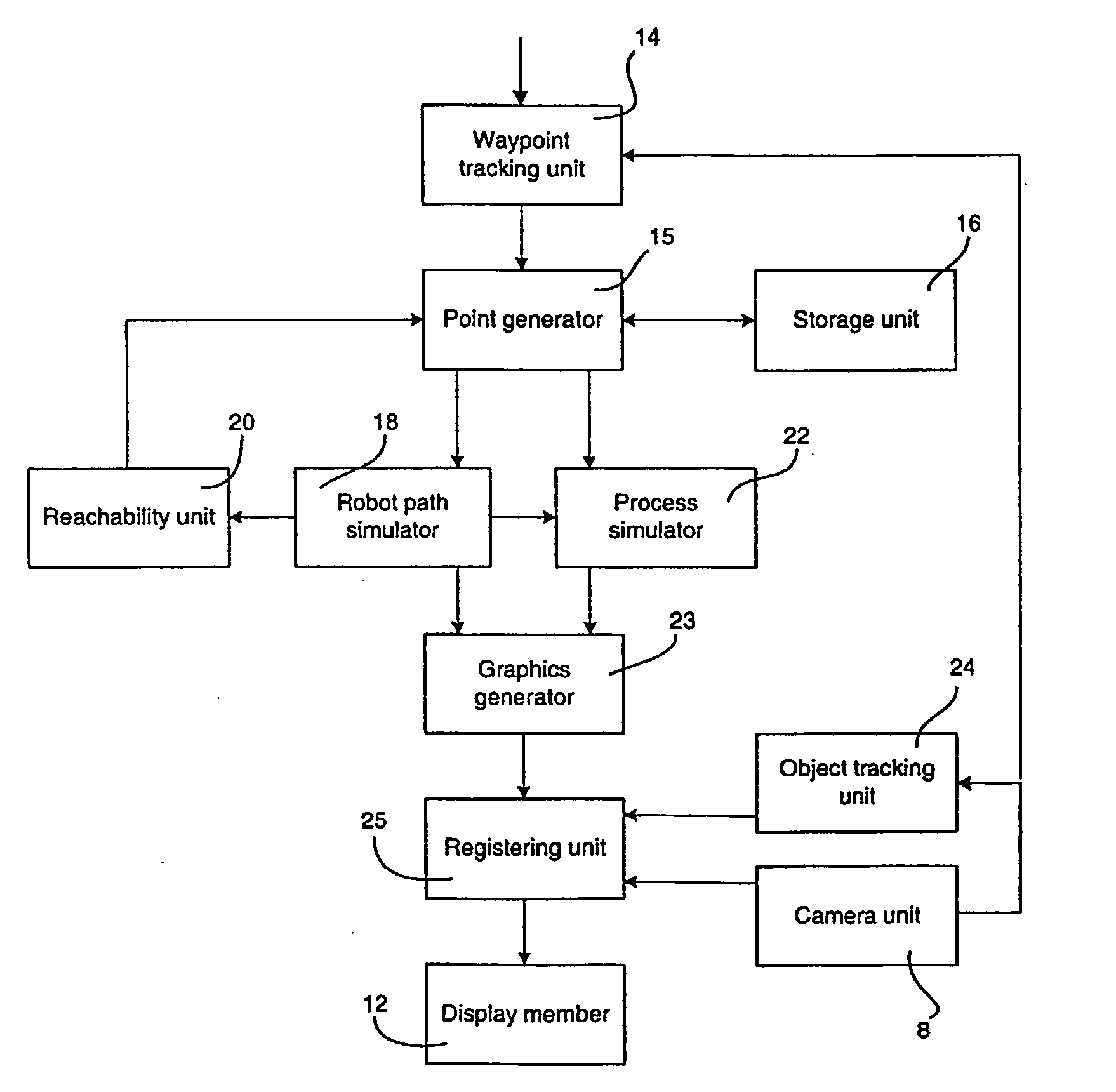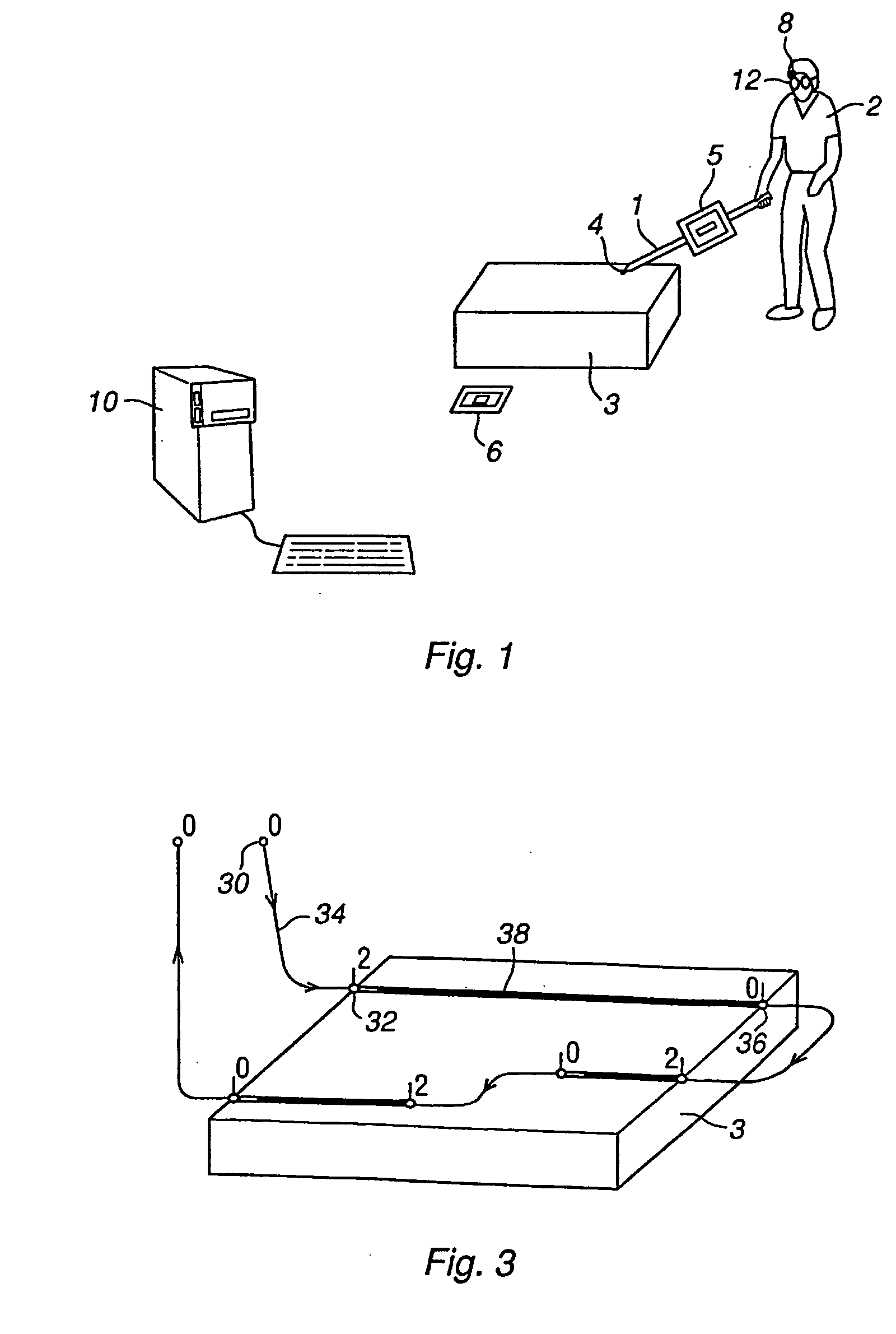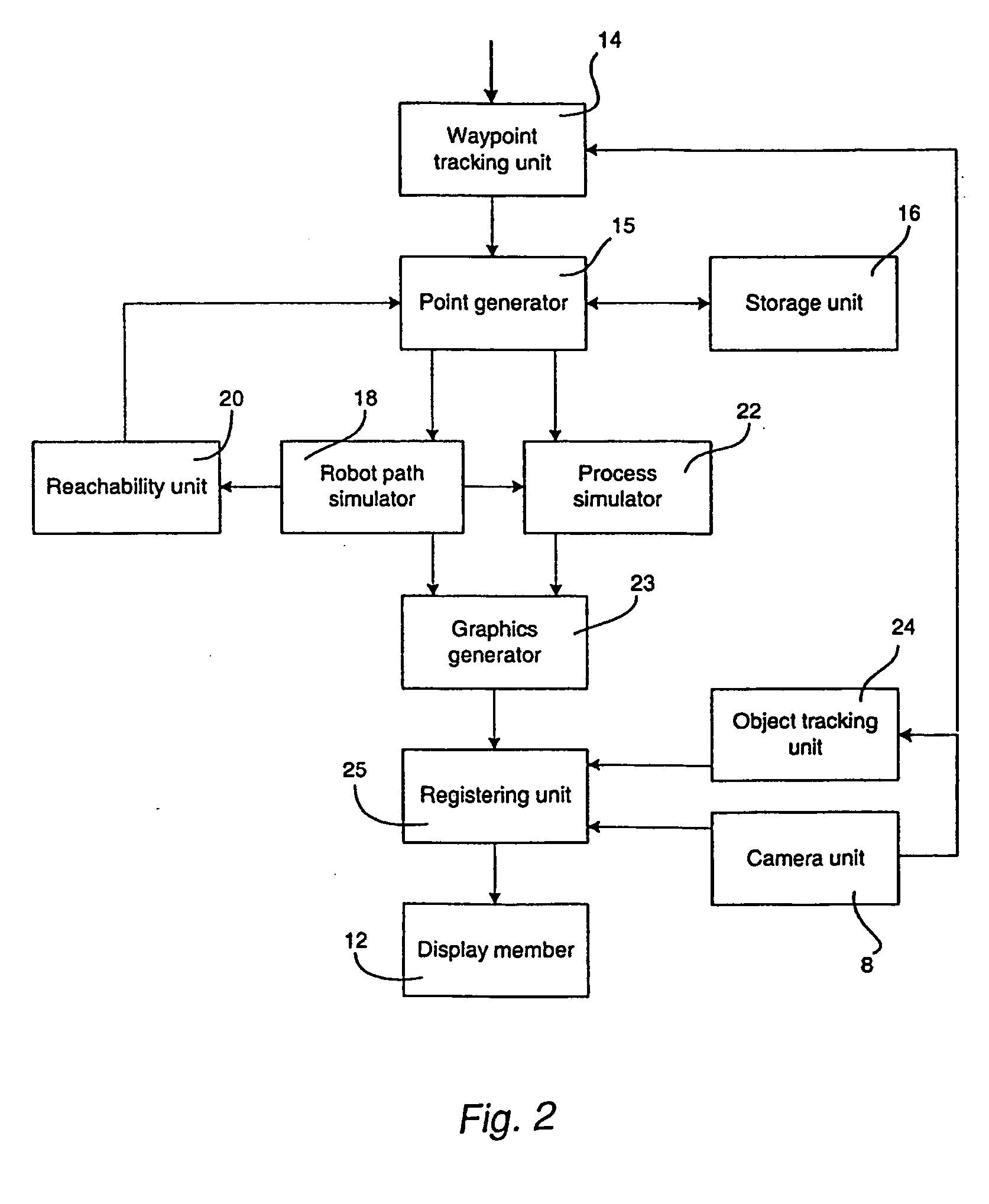[0010] The object of the present invention is to provide an improved industrial
robot programming solution, which reduces the teaching time for the teaching process and increases the quality of the
processing result.
[0011] According to one aspect of the invention, the object is achieved by means of the initially defined method, comprising: obtaining information about the position of the waypoints in relation to the object, storing the information about the position of the waypoints, simulating the
robot path based on the received information about the waypoints and a model of the robot, generating a graphical representation of the robot path based on the simulated robot path, and displaying a view comprising the object and said graphical representation of the robot path projected on the object. This method improves the teaching process by visualizing the robot path in relation to the real object to be processed.
[0012] Obviously, it is not efficient if the robot moves the tool in straight lines between the waypoints specified by the operator. In order to achieve an efficient robot program, effecting the tool to pass through the specified
waypoint at required speed and direction, a robot path has to be generated. The robot path is generated from a path simulator, simulating the robot path based on specified waypoints and a model of the robot. Computer generated information, representing the generated robot path, is displayed projected on the real object or on an image of the real object. Thus, it is possible for the operator to get extended
visual feedback while making a new robot program related to a specific object. It is no longer necessary to run the robot program to view the result of the programming. Thereby, the number of iterations needed and thus the teaching time is reduced. The method is particularly advantageously during off-line programming. Another
advantage of the method is that no 3D CAD model of the object is needed, since the generated graphic is projected on the real object or on an image of the real object. The programming time will be significantly reduced since the operator will be able to make a robot program at a higher
quality level during the first iteration compared to today's methods.
[0018] According to a further embodiment of the invention, the method comprises: obtaining information about which tool to be used to perform the process and about the orientation of the tool in the waypoints, simulating the tool performing the process, generating a graphical representation of the tool performing the process along the robot path based upon the obtained information about the position of the waypoints and the orientation of the tool, and displaying a view showing the tool moving along the robot path performing the process, based on the generated graphical representation of the
simulation of the tool performing the process. For example, if the process is painting, a virtual paint-gun is displayed moving along the robot path performing the paint procedure and the paint being applied onto the object is shown. This
visualization of the tool performing the process helps the operator to evaluate the taught robot program.
[0019] According to a further embodiment of the invention the view of the robot path and / or the result of the process is displayed as a function of time and the view is displayed proportional to the real-time. Real-time is the actual time it takes for the robot to move through the path performing the process. In a preferred embodiment the method further comprises: receiving information about a desired speed of the displaying of the view, and displaying the view in accordance with the desired speed. Preferably, the speed is altered in relation to the real-time. Sometimes the operator finds the real-time speed to be too fast, and thus wishes to slow down the speed. This embodiment of the invention makes it possible for the operator to alter the speed of the display.
[0021] According to a further embodiment of the invention the method comprises simulating the quality of the result of the process based on one or a plurality of predefined quality parameters and the model of the process, generating a graphical representation of the quality of the result of the process, and displaying the
view based on the generated graphical representation of the
simulation of the quality of the result of the process. Preferably, the method further comprises estimating whether the quality of the result does not meet one or several quality requirements, based on said simulation of the quality of the result of the process, and generating said graphical representation with a
visual feedback to the operator where the
process quality is estimated not to meet the quality requirements. In the paint process, the quality parameters for instance are overlap between paint strokes, parts of the object not covered by the paint, the paint thickness, the paint width, and sag of the paint. Thus, if the paint is estimated to be sagging or not covering the object, this will be shown by the generated
graphics. This embodiment makes it possible for the operator to generate robot programs with high quality, without the need of executing the actual process.
 Login to View More
Login to View More  Login to View More
Login to View More 


